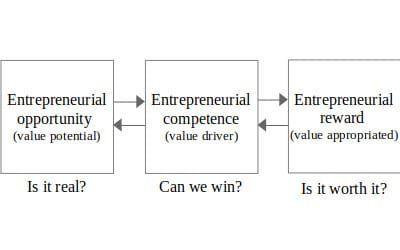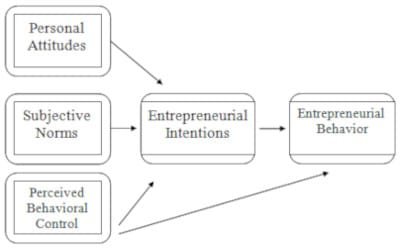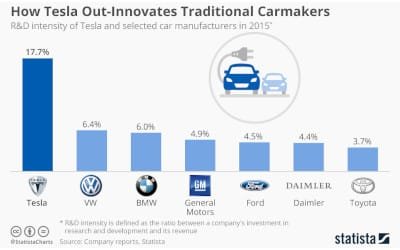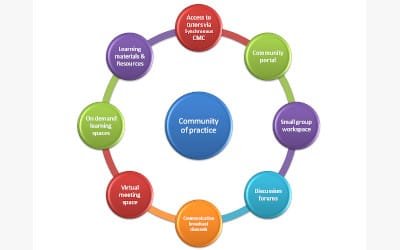Innovation & Change are Central to Value Creation
Published in 2016

Introduction
This essay dives into the importance of innovation and change, highlighting how they contribute significantly to organisational value creation. Scholars and business experts like Peter Drucker, Michael Porter, Jack Welch, and Richard Branson have emphasised their crucial role in modern businesses. Drucker, especially, has underlined how neglecting these areas can seriously stunt organisational growth. Although innovation’s importance has been widely recognised, achieving successful organisational change remains challenging, with many initiatives falling short of their goals.
Numerous scholars have developed advanced change management models to guide organisations in approaching change systematically. Innovation and change play a vital role in expanding business activity and adding organisational value, ultimately enhancing profitability, wealth, and competitive advantage.
The essay kicks off with defining innovation, change, and value creation, and then delves into analysing their various aspects critically and informatively.
Innovation, Change and Value Creation
Innovation, as a concept, has been examined and developed over time, which, in turn, has resulted in the creation of several definitions. Skillicorn (2020) stated that innovation entails the conversion of an idea into a solution that results in addition to value from the perspectives of customers. He informed that customers are unlikely to change their buying behaviour if an innovative product does not result in value addition for them. Burkus found that innovation involves the application of useful and novel ideas; creativity comprises the seed of innovation but is likely to remain in the realm of idea generation until and unless it is applied and scaled suitably (Skillicorn, 2020). Shapiro stated that innovation entails staying relevant in a time of unprecedented change; what could have assisted an organisation in the past to be successful could potentially be a cause for future failure (Skillicorn, 2020). Business organisations thus have to evolve and adapt to satisfy the continuously altering requirements of their business environment (Skillicorn, 2020). McCarthy stated that innovation involved the introduction of new products or services added to the business and organisational value (Skillicorn, 2020).
Organisational change constitutes the process of alteration of organisational strategies, processes, procedures, technologies, and culture (Agbim et al., 2013). Bucciarelli (2015) stated that it refers to the process of organisational transformation, growth, and decline. It is essential for organisations to adapt and change in response to environmental developments to stay relevant and avoid obsolescence (Walz, 2008). Such changes are generally brought about by external pressures, which can relate to technology and equipment, market environment, social and political issues, as well as internal factors like management changes and identification of organisational deficiencies (Bucciarelli, 2015). Several experts have attempted to examine the relationship between innovation and change.
Lee and Yu (2010) stated that business organisations need to innovate continuously to generate changes in organisational strategies and processes. Innovation can result in the production of sudden and dramatic alterations to the products, services, and businesses of organisational managements (Tidd et al., 2004). Innovation helps in making things faster, cheaper, and better than those of competing organisations (Moss, 2019). It continuously drives organisational improvements and can unleash new ideas that can result in significant changes to organisational activity (Jorgensen, 2015). Business organisations, thus, need to approach innovation and change with proactive and result-oriented attitudes.
Value creation in business organisations concerns the process of creation of outputs that are essentially more valuable than inputs (Jorgensen, 2015). Value can arise on account of technical, economic, and service output that helps organisational managements improve profitability, wealth, market share, and customer satisfaction, among others (Blacharski, 2019). Innovation and changes often result in the development of business value, as well as in the enhancement of competitive ability (IEDP, 2017).
Leading Innovation and Change
Innovation has been explored and defined in various ways over time. Skillicorn (2020) describes it as the process of turning ideas into solutions that add value from the perspective of customers. Without providing value, innovative products are unlikely to change customers’ buying behaviour. Burkus adds that innovation involves applying useful and novel ideas, with creativity being the starting point, but it needs to be applied and scaled appropriately to make an impact (Skillicorn, 2020). Shapiro emphasises that innovation means staying relevant in a rapidly changing world, as what worked in the past may lead to failure in the future. This necessitates businesses to evolve and adapt to meet changing environmental demands (Skillicorn, 2020). McCarthy defines innovation as the introduction of new products or services that add value to the business.
Organisational change refers to the process of altering strategies, processes, technologies, and culture within an organisation. It’s essential for organisations to adapt to environmental developments to remain relevant and avoid becoming obsolete (Bucciarelli, 2015). Changes are often driven by external pressures like technological advancements, market conditions, and internal factors such as management changes and identifying organisational weaknesses.
Lee and Yu (2010) assert that continuous innovation is necessary for organisations to drive changes in strategies and processes. Innovation can lead to significant alterations in products, services, and business operations, making them faster, cheaper, and better than those of competitors (Moss, 2019). It drives organisational improvements and fosters new ideas that can revolutionise organisational activities (Jorgensen, 2015).
Value creation in businesses involves producing outputs that are more valuable than inputs. This can be achieved through technical, economic, and service outputs that improve profitability, wealth, market share, and customer satisfaction (Blacharski, 2019). Innovation and changes often lead to the creation of business value and enhance competitive ability (IEDP, 2017).
Strategic Value and Relevance of Innovation and Change
The previous section gave a quick rundown of the key traits and importance of innovation, change, and business value. It’s crucial for businesses to constantly anticipate and meet the needs of their customers to drive organisational growth and value. Given that innovation and change are now essential for survival and success, organisational leaders play a pivotal role in guiding strategies to continually enhance business value (Agbim et al., 2013).
White and Bruton (2007) underscored the critical role of innovation in business growth and success. They highlighted its importance in responding effectively to unexpected environmental changes, solving complex business challenges, tapping into international entrepreneurship trends, competing with agile start-up methodologies, keeping pace with technological advancements, adapting to evolving workplace dynamics, responding to customer preferences, and maximising global connectivity.
Furthermore, implementing specific organisational changes enables businesses to make significant and planned adjustments to achieve strategic objectives and create value (Balogun et al., 2005). Palmer et al. (2006) emphasised the various benefits of organisational change, including anticipating and responding to environmental shifts, exploring new business avenues, improving organisational efficiency, and gaining competitive advantage. These benefits ultimately contribute to the creation of organisational value (Walz, 2008). Innovation and change are often intertwined and addressed together to drive business value.
Operational Value and Relevance of Innovation and Change
Hammer (2004) highlights that implementing innovation and change can bring about various operational benefits. Michael Porter’s (1985) theory of generic competitive advantage suggests that businesses can gain an edge through cost leadership or differentiation. Cost leadership involves managing input costs, scaling economies, and developing streamlined processes. Innovation and change in these areas can optimise costs and support the strategy of cost leadership. On the other hand, differentiation requires offering unique products and services that attract customers and command premium prices. Innovation can enhance design, add features, and control costs, leading to value addition. It’s worth noting that innovation and organisational change can also optimise niche markets with bespoke products and services.
Kiechel (2010) argues that organisations often boost operational and business value through product leadership, operational excellence, and customer intimacy. Innovation plays a crucial role in all these areas. For instance, Tesla Inc. has achieved remarkable product leadership through continuous innovation. By focusing on innovation and quality, Tesla has become a leading electric car manufacturer globally, challenging established carmakers like BMW, Audi, and Mercedes in Europe.
Conversely, operational innovation has driven success stories in businesses like Zara, Walmart, and Dell (Knowledge @Wharton, 2006). Innovation is now seen as essential for organisations aiming to achieve operational excellence.
It’s essential to discuss how innovation and change contribute to value addition across different areas of the value chain. Michael Porter introduced the concept of the value chain, emphasising that organisations can add value by focusing on primary activities like inbound logistics, operations, outbound logistics, marketing and sales, and service, along with support activities like firm infrastructure, human resources, technology, and procurement. By innovating and implementing changes in these areas, organisations can create value.
Innovation and Change: Ideas, Choices, and Portfolio Planning
It’s fascinating to delve into the different avenues from which innovation emerges. Peter Drucker (1985) outlined seven sources of innovation opportunities, including unexpected events, incongruities, process needs, industry and market changes, demographic shifts, perceptual changes, and new knowledge. Drucker (2002) stressed that purposeful innovation should start with identifying and analysing these opportunities systematically.
Other experts have added sources like social dynamics, input from internal and external stakeholders, blue-sky thinking, broadening perspectives, internal R&D efforts, market demands, R&D mistakes, crisis responses, legislative changes, and user needs (Westland, 2008). For instance, internal R&D efforts led to the Sony Walkman and the Apple iPhone. Earthquakes in Japan prompted the development of earthquake-resistant buildings, while emissions legislation drove the creation of fuel-efficient engines (Goffin & Mitchell, 2005).
Tidd and Bessant (2014) segmented the innovation search landscape into four areas: better exploitation, limited exploration, reframing, and co-evolution. Organisational innovation is fuelled by strategic goals, performance targets, and the quest for market sustainability (Westland, 2008).
Considerable attention has been given to selecting innovation projects. While choices are influenced by market opportunities, strategic requirements, business survival, and financial goals, three selection approaches stand out: Portfolio Management, the Gatekeeper Approach, and the Arthur D Little matrix for technology decisions (Thuriaux-Alemán et al., 2013). Portfolio Management involves categorising innovation opportunities as stars, cash cows, dogs, or question marks to identify potential projects (Cooper et al., 1998). The Gatekeeper approach advocates evaluating ideas through five stages before making an innovative decision (Barzilai-Nahon, 2009). The Arthur D Little matrix categorises technological knowledge into base, key, emerging, and facing areas to guide innovation strategies based on impact, enterprise importance, and knowledge protection.
Innovation Components, Structures and Processes
Examining and analysing the crucial elements of innovative organisations is necessary to cultivate and nurture them. Several authors, including Mayle (2006), Smith (2006), and Henry & Mayle (2002), have provided suggestions on the prerequisites of innovative organisations. Tidd and Bessant (2009) emphasise the importance of a shared vision of the organisational future and a high level of commitment to innovation.
In addition to firm resolve, creating a suitable organisational structure is vital for fostering innovative capability. Toma (2019) suggests various approaches to developing innovative structures: centralised, decentralised, and hybrid. The hybrid structure, a blend of functional and divisional structures, appears to be the most adaptable. While it allows business units to opt in or out of central support, it also entails risks like inconsistencies and duplication.
According to Tushman and Anderson (2004), innovative organisations prioritise the development of individual talent, effective teamwork, extensive communication systems, and a supportive and experimental climate. White and Bruton (2007) highlight the significance of communication in fostering innovation, advocating for multiple communication channels across the organisation. Effective communication is essential for collaboration among innovation teams, particularly in areas like new product development and process innovation (Pellissier, 2009).
Innovation and Change Ecosystems, Culture and Climate
Agbim et al. (2013) pointed out that the organisational climate, culture, and environment play a crucial role in fostering innovative capability and a mindset for change. The culture and environment of an organisation significantly influence its innovative spirit and ability (Bucciarelli, 2015). Isaksen and Tidd (2006) emphasised the need for organisational leaders to create a supportive atmosphere that removes insecurity and encourages innovation. Creating an environment characterised by open communication, debate, risk-taking, autonomy, and discretion in daily activities is essential.
Tsuja and Marino (2013) highlighted the importance of the environment in developing innovative capability and a mindset for change. Organisational leaders must not only establish a supportive structure and climate for innovation but also prioritise both soft and hard aspects of organisational activity and control. This involves enhancing staff commitment and motivation while emphasising quantitative measures like key performance indicators and sales figures.
Developing an innovative ecosystem requires attention to individuals, teams, departments, and the organisation as a whole. It’s crucial to focus on these areas to optimise both innovative abilities and the organisation’s orientation toward change.
Social Innovation and Sustainability
Sustainability has become a key focus for companies worldwide, especially in developing nations, and innovation plays a crucial role in achieving sustainability goals (Hansmann et al., 2012). Pol and Ville (2009) noted that businesses are integrating sustainability objectives into their innovation strategies to expedite progress. This focus on innovation to enhance sustainability has led to the creation of green products, the optimisation of manufacturing processes through lean practices, and efforts to rebrand products, services, and brands to appeal to customers and stakeholders. Businesses can significantly advance their sustainability initiatives through innovative ideas and organisational changes (Osburg, 2013), especially in areas like waste management, recycling, and energy optimisation (Bessant & Tidd, 2011). The use of innovation in sustainability efforts is expected to continue growing in the future.
Challen.
Challenges and Barriers to Innovation and Change
In the past, innovation was often seen as occasional flashes of brilliance resulting in incremental improvements or groundbreaking products and services. However, modern organisations can’t rely on sporadic innovation anymore. Instead, innovative efforts must be integrated into the fabric of the organisation to stay relevant and competitive in the market and to boost market share, business volume, profitability, and wealth.
Institutionalising innovation, though, is no walk in the park. It requires significant investments in talent, systems, processes, and infrastructure, which many SMEs simply can’t afford. With economic conditions remaining sluggish in Western markets for years, most SMEs struggle to generate the profits needed to foster innovative capabilities.
However, it’s not just SMEs that are facing challenges. Larger organisations also grapple with various hurdles that need to be addressed. Organisational leadership must understand that building innovative capabilities takes time, resources, and a willingness to accept failure. While it may be tempting to skimp on hiring top talent due to costs, it’s crucial to recognise the pivotal role of human talent in fostering innovation.
Creating a conducive environment for innovation and implementing systems to monitor its results are essential. Establishing a learning organisation can greatly aid in developing innovative skills and abilities. However, this is no easy feat and requires implementing systems to encourage learning, knowledge-sharing, and information exchange within the organisation.
Overall, organisational leaders must identify and overcome barriers to innovation to foster a culture of innovation and drive organisational success.
References
Agbim, K.C., Oriarewo, G.O., & Omattah, A.E. (2013). An Exploratory Study of the Relationship between Innovation and Change Management. International Journal of Scientific and Research Publications, 3(6), 1-7.
Anderson, N., Potocˇnik, K., & Zhou, J. (2014). Innovation and creativity in organisations: A state-of-the-science review, prospective commentary, and guiding framework. Journal of Management, 40(5), 1297–333.
Andriopoulos, C., & Dawson, P. (2009). Managing Change, Creativity & Innovation. London: Sage.
Balogun, J., Gleadle, P., Hope-Hailey, V., & Willmott, H. (2005). Managing change across boundaries: Boundary shaking practices. British Journal of Management, 16, 261-278.
Barzilai-Nahon, K. (2009). Gatekeeping: A critical review. Annual Review of Information Science and Technology, 43, 433–478.
Bessant, J., & Tidd, J. (2011). Innovation & Entrepreneurship (2nd Edition). New York: Wiley.
Blacharski, D. (2019). The True Origin of Value Creation. Available at: https://imcpa.com/wp-content/uploads/2018/10/The-True-Origin-of-Value-Creation.pdf (accessed April 21, 2020).
Bucciarelli, L. (2015). A Review of Innovation and Change Management: Stage Model and Power Influences. Universal Journal of Management, 3(1), 36-42.
Cooper, R.G., Edgett, S.J. & Kleinschmidt, E.J. (1998). Portfolio Management for New Products. Reading, Mass: Perseus Publishing.
Dougherty, D. (2016). Organising for innovation in complex innovation. Innovation: Organization & Management, 19(1), 11-15.
Drucker, P.F. (1985). Innovation and Entrepreneurship. New York: Harper & Row.
Drucker, P.F. (2002). The Discipline of Innovation. Available at: https://hbr.org/2002/08/the-discipline-of-innovation (accessed April 21, 2020).
Fagerberg, J., Mowery, D.C., & Nelson, R.R. (2005). The Oxford Handbook of Innovation. Oxford: Oxford University Press.
Furr, N., & Dyer, J. (2020). Lessons from Tesla’s Approach to Innovation. Available at: https://hbr.org/2020/02/lessons-from-teslas-approach-to-innovation (accessed April 21, 2020).
Goffin, K., & Mitchell, R. (2005). Innovation Management. New York: Palgrave.
Hammer, M. (2004). Deep Change: How Operational Innovation Can Transform Your Company. Available at: https://hbr.org/2004/04/deep-change-how-operational-innovation-can-transform-your-company (accessed April 21, 2020).
Hansmann, R., Mieg, H.A., & Frischknecht, P. (2012). Principal sustainability components: Empirical analysis of synergies between the three pillars of sustainability. International Journal of Sustainable Development and World Ecology, 19(2), 451–459.
Henry, J., & Mayle, D. (2002). Managing Innovation & Change. London: Sage.
IEDP. (2017). Innovation for Value Creation. Available at: https://www.iedp.com/articles/innovation-for-value-creation/ (accessed April 21, 2020).
Isaksen, S.G., & Tidd, J. (2006). Meeting the innovation challenge: Leadership for transformation and growth. Chichester, UK: Wiley.
Jorgensen, E. (2015). Why Value Creation is the Foundation of Business: How to define it, measure it, and manage it. Available at: https://medium.com/evergreen-business-weekly/why-value-creation-is-the-foundation-of-business-how-to-define-it-measure-it-and-manage-it-147c92b87aca (accessed April 21, 2020).
Kiechel, W. (2010). The Lords of Strategy. Harvard: Harvard Business Press.
Knowledge @Wharton. (2006). To Make Operational Innovations, You Must Change Your Way of Thinking. Available at: https://knowledge.wharton.upenn.edu/article/to-make-operational-innovations-you-must-change-your-way-of-thinking/ (accessed April 21, 2020).
Lee, H., & Yu, C. (2010). Effect of relation style on innovation performance. African Journal of Business Management, 4(9), 1703-1708.
Mayle, D. (2006). Managing Innovation & Change (3rd edition). London: Sage.
Mintzberg, H. (2000). Rise and Fall of Strategic Planning. New Jersey: Financial Times.
Moss, W. (2019). Why Real Innovation Comes From A Free-Market Economy. Available at: https://www.wesmoss.com/news/why-real-innovation-comes-from-a-free-market-economy/ (accessed April 21, 2020).
Osburg, T. (2013). Social Innovation to Drive Corporate Sustainability. Berlin/Heidelberg, Germany: Springer.
Palmer, I., Dunford, R., & Akin, G. (2006). Managing organisational change. Boston, M.A.: McGraw-Hill.
Pellissier, R. (2009). Innovation in operational excellence in a complex environment. Available at: https://www.researchgate.net/publication/224595586_Innovation_in_operational_excellence_in_a_complex_environment (accessed April 21, 2020).
Pol, E., & Ville, S. (2009). Social innovation: Buzz word or enduring term. Journal of Socio-Economics, 38(1), 878–885.
Porter, M.E. (1980). Competitive Strategy. New York: Free Press.
Porter, M.E. (1985). Competitive Advantage. New York: Free Press.
Skillicorn, N. (2020). What is innovation? 15 experts share their innovation definition. Available at: https://www.ideatovalue.com/inno/nickskillicorn/2016/03/innovation-15-experts-share-innovation-definition/#davidb (accessed April 21, 2020).
Smith, D. (2006). Exploring Innovation (2nd Edition). New York: McGraw Hill.
Thuriaux-Alemán, B., Francis, R., Davies, C., & Bohlin, N. (2013). Finding your balance: Insights into world-class portfolio management. Available at: https://www.adlittle.com/sites/default/files/viewpoints/ADL_R_D_BestPractice_Finding_your_balance_Portfolio_Management_01.pdf (accessed April 21, 2020).
Tidd, J., Bessant, J., & Pavitt, K. (2004). Managing Innovation: Integrating technological, market and organisational change. John Wiley & Sons Ltd: NY.
Tidd, J., & Bessant, J. (2009). Managing Innovation: Integrated Technological, Market & Organizational Change (4th Edition). New York: Wiley.
Tidd, J., & Bessant, J. (2014). Strategic Innovation Management. New York: Wiley.
Toma, D. (2019). Three Ways to Structure Innovation. Available at: https://medium.com/the-corporate-startup/three-ways-to-structure-innovation-82dbc7fb5b24 (accessed April 21, 2020).
Tsuja, P.Y., & Marino, J.O. (2013). The Influence of the Environment on Organizational Innovation in Service Companies in Peru. Available at: http://www.scielo.br/scielo.php?pid=S1806-48922013000400582&script=sci_arttext&tlng=en (accessed April 21, 2020).
Tushman, L.M., & Anderson, P. (2004). Managing Strategic Innovation & Change. Oxford: Oxford University Press.
Walz, J. (2008). Managing Innovation and Change. Leadership & Organization Development Journal, 29(2), 206-207.
Westland, J.C. (2008). Global Innovation Management: A Strategic Approach. New York: Palgrave.
White, M.A., & Bruton, G.D. (2007). The Management of Technology & Innovation. New York: Thomson South-Western.
More From This Category
Theories of Entrepreneurial Opportunity
The study of entrepreneurship isn’t just about admiring successful entrepreneurs from afar. It’s about digging deep into why they do what they do, when they do it, and how it all plays out in the end. It’s like peeling back the layers of an onion to uncover the juicy bits inside.
And to tackle these burning questions, we’ve got two heavyweights in the ring: the Discovery Theory and the Creation Theory. These bad boys are all about figuring out why humans do what they do and how it helps them achieve their goals.
Behavioural Theories and Entrepreneurship
Management and behavioural experts have delved into entrepreneurship extensively, and there’s a whole body of work on the topic. Lazear paints a broad picture, defining an entrepreneur as someone who starts a new venture. But that definition lumps together someone opening a small local business with giants like Jeff Bezos or Steve Jobs. Sure, there’s some truth there, but it’s tricky to draw general conclusions about entrepreneurship because it comes in so many shapes and sizes. Entrepreneurship research tackles big questions like why some people dive into entrepreneurial ventures while others with similar talents and energy don’t, and why some spot entrepreneurial opportunities while others miss them.
Tesla: Critical Evaluation of Corporate Social Responsibility and Global Innovation Management
Established in 2003, Tesla Motors, the US-headquartered manufacturer of electric vehicles, solar panels and solar roof tiles, has become globally famous for its pioneering, innovative and entrepreneurial efforts in the development of electric vehicles and renewable energy. The firm has grown phenomenally in the last two decades and is now one of the most valuable corporations in the world. Its CEO Elon Musk is currently one of the the wealthiest persons in the world
Competitive Advantage through the Learning Organisation
The achievement and effective use of knowledge is widely accepted by contemporary managements, theorists and researchers to be the chief source of competitive advantage of modern day business organisations.
Communities of Practice in Knowledge Transfer
The achievement and effective use of knowledge is widely accepted by contemporary managements, theorists and researchers to be the chief source of competitive advantage of modern day business organisations.
A Unique Entrepreneurial Path: Sir Richard Branson
This short report aims to analyse the area of entrepreneurship, with specific reference to the entrepreneurial abilities, skills, and success of Sir Richard Branson.







0 Comments